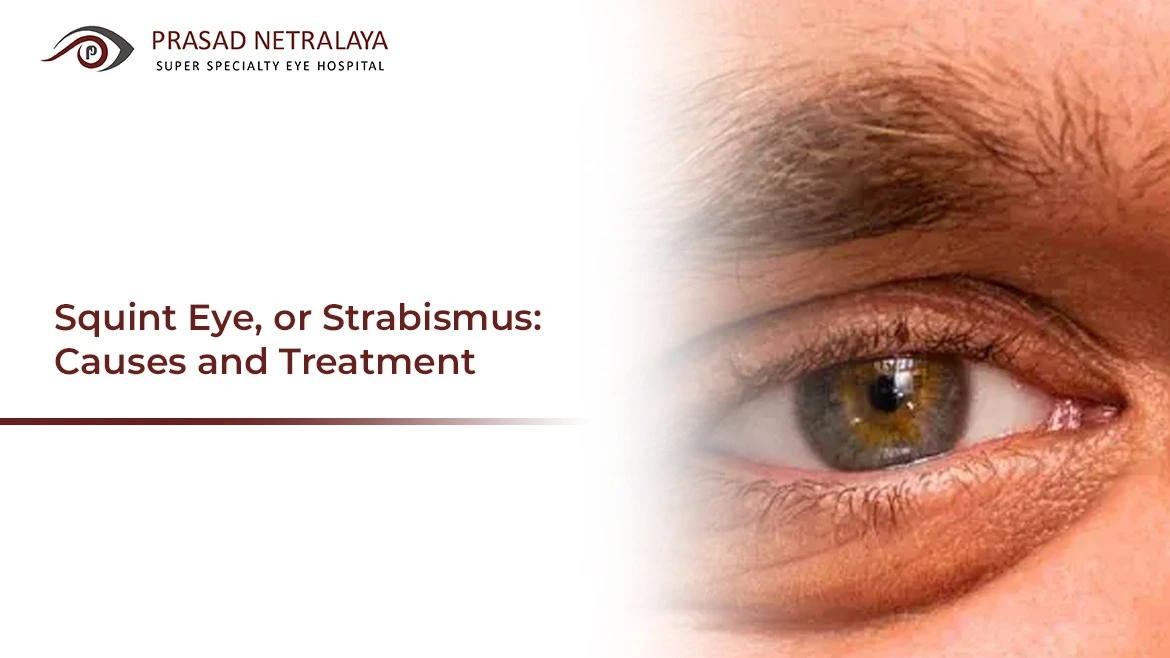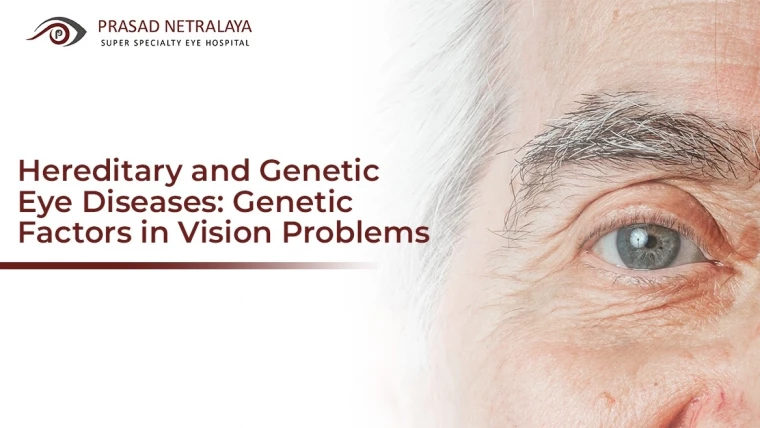Strabismus or squint eye occurs when the eyes appear misaligned. The classification of the squint is based on the eye’s position into four segments: Hypertropia, Hypotropia, Esotropia, and Exotropia.
Early detection of squint eyes helps tackle severe complications and avoids permanent vision loss. Surgery as a squint eye treatment can improve the alignment of the eye, but any vision problem that goes untreated for a long time may become permanent.
In this comprehensive blog, we will discover the meaning of squint eye, its causes, treatment, and the tests required.
Table of Contents
What Is Strabismus (Squint)?
Strabismus, also called squint, is a medical condition where eyes do not look in the same direction. The condition is widespread in children but can occur at any stage of life.
The disorder happens due to poor eye muscle control. The misalignment either remains constant or comes and goes. Constant squint eye affects the binocular vision and eventually leads to loss of depth perception.
When a child has a squinted eye, their brain gets used to ignoring the image from the misaligned eye. Over time, this can make the child lose the ability to see things in 3D. On the other hand, adults might experience double vision because they’re already familiar with depth, and their brains get to see two images at once.
What Causes Squint Eyes?
A child is likely to develop a squint eye due to premature birth, nerve and muscle damage, or a head injury. Adults experience the problem in later stages due to underlying issues such as thyroid disease, head trauma, or strokes. Here are the causes that may lead to squint eye.
1. Extraocular Muscles
Extraocular muscles are the six muscles that control and coordinate eye movements. Squint is likely to develop when a problem occurs in the function and control of these muscles. Sometimes, a squinted eye happens because the muscles don’t work right, while in other cases, it’s the part of the brain that controls these muscles that causes the misalignment.
2. Disorders
Disorders that may give rise to squint are:
- Cerebral Palsy: A congenital disorder that affects muscle tone, movement, and posture.
- Hydrocephalus: It is a neurological disorder in which fluid builds up in the brain.
- Down Syndrome: This syndrome occurs due to a genetic condition and affects mental and physical growth.
- Brain Tumors: Tumors in the brain sometimes damage the area that controls the vision.
3. Congenital Reasons
Congenital strabismus refers to the condition of squint in a child that is either born with a squint or develops the condition in the first six months of birth. Sometimes, a child’s uncorrected farsightedness also gives rise to a squint eye called accommodative esotropia.
4. Underlying Diseases
Diabetes, cataracts, eye tumors, or injuries also play a role in the development of squints. A squint might be a symptom of a rare type of eye cancer known as Retinoblastoma. One may also have a squint if the condition runs in genetics.
What Are the Tests for Squint?
Your optometrist may suggest the following tests before creating a thorough squint eye treatment plan:
- A retinal test
- Visual Acuity
- Cover/Uncover Test
- Corneal Light Reflex
- Brain/Nervous System Examination
What Is the Treatment for Squint Eye?
An optometrist will examine and create the diagnosis of a squint eye following a comprehensive eye examination. A person with a squint eye condition can follow the below-mentioned steps and procedures:
- Eye-Patch: An eye-patch tied around the strong eye forces the weaker eye to focus and increase muscle strength.
- Glasses: When the squint is in a mild stage or has developed due to vision issues, doctors recommend glasses.
- Exercises: One of the exercises for squint eye is the pencil push-ups. In pencil push-ups, a person has to keep the pencil at arm’s length and stare at it for a few seconds. In the next step, they must bring the pencil closer while keeping their gaze fixed on it.
- Surgery: Squint eye surgery changes the position or length of the eye’s muscles. It realigns the eyes and helps restore impaired binocular vision.
Navigating the Treatment of Strabismus With Prasad Netralaya Eye Hospital
The rising success rates in squint eye treatment, with a 2% to 5% prevalence in the general population, emphasize the significance of accessible and effective treatment options. With promising outcomes and feasible solutions, improving visual alignment appears optimistic and attainable.
Visit Prasad Netralaya Eye Hospital to book a consultation and get a detailed squint eye treatment procedure overview.
Dr. Vikram Jain, M.S. had his medical training (MBBS) from Kasturba Medical College, Mangalore, India. He did his master’s in Ophthalmic surgery from Kasturba Medical College, Manipal. He currently manages the Glaucoma department of Prasad Netralaya hospital.



